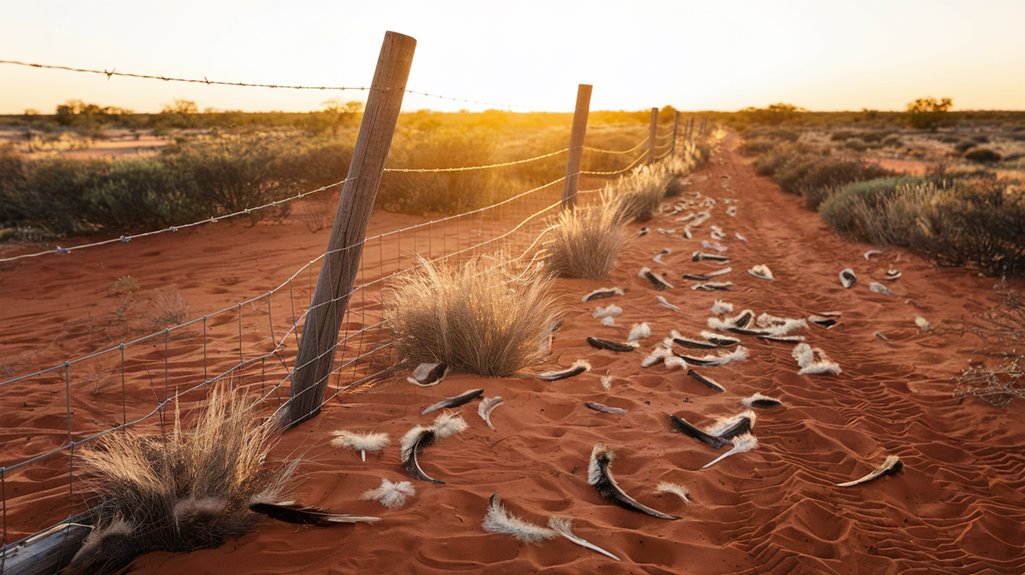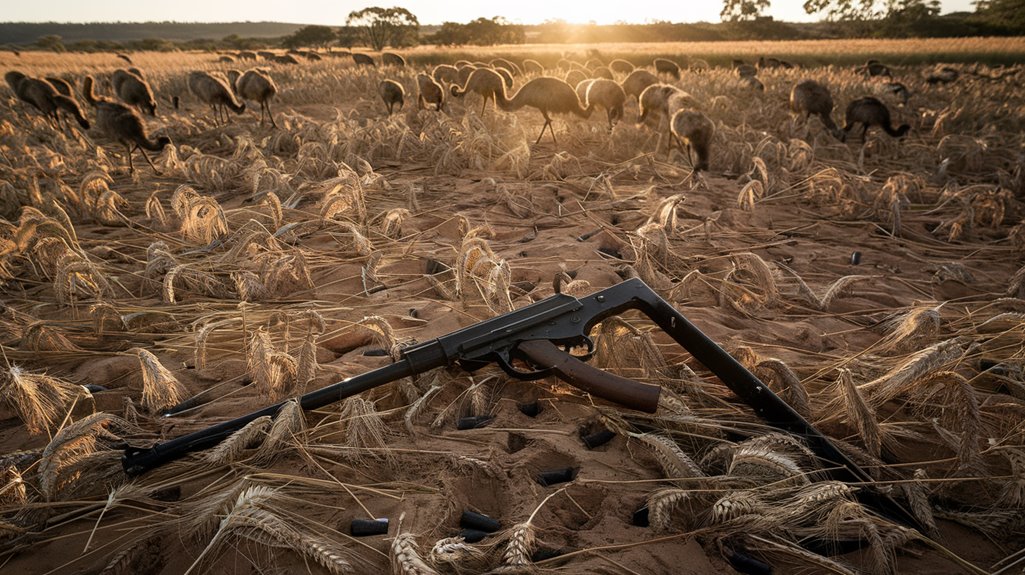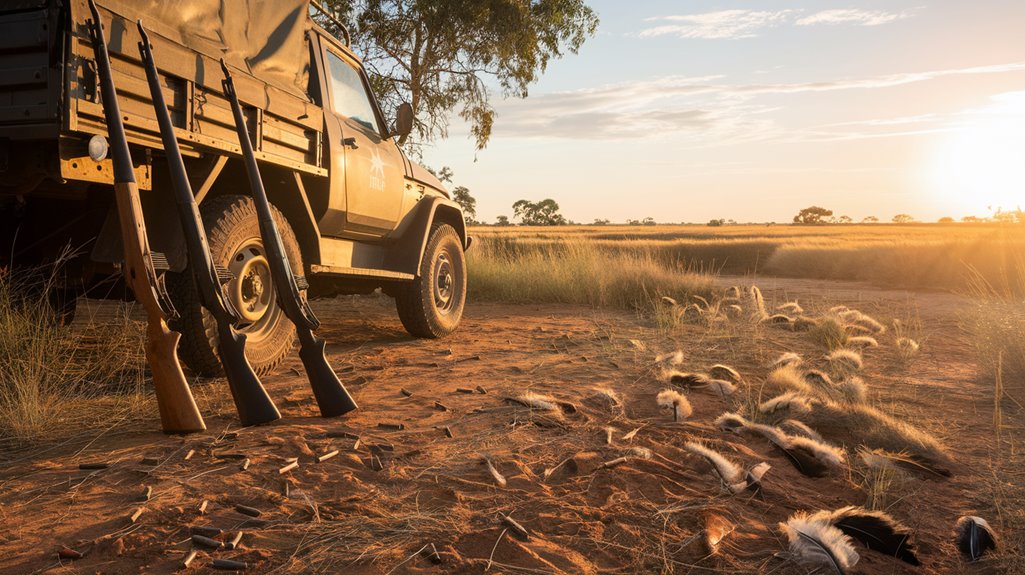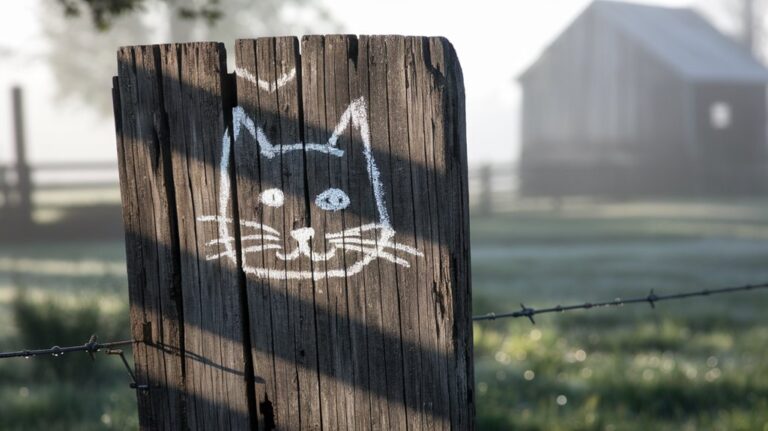Australia Fought and Lost a War Against Emus
You've probably heard about conventional wars between nations, but have you considered a military campaign against birds? In 1932, Australia launched an official operation against thousands of emus that were destroying farmland in Western Australia. What began as a straightforward plan to protect crops turned into a peculiar and embarrassing episode that would haunt the Australian military. The story of how these flightless birds outsmarted machine guns and military tactics offers an amusing glimpse into one of history's most unusual conflicts.
The Great Emu Invasion of Western Australia

When thousands of emus migrated from Australia's inland regions to coastal farmlands in Western Australia during the early 1930s, they sparked one of history's most unusual military campaigns.
You'd find these massive birds, nearly 20,000 of them, wreaking havoc on crops and agricultural infrastructure during a time when farmers were already struggling through the Great Depression.
Many farmers were World War I veterans who had been given land through a government settlement program.
The emu behavior proved particularly challenging, as these clever birds displayed remarkable tactical abilities. They'd split into smaller groups when threatened, making them difficult to target, while designated leaders would warn others of approaching danger.
The agricultural impact was devastating – the birds found the converted farmland perfect for their needs, with plenty of food and easy terrain to navigate.
The situation became so dire that in November 1932, military forces were deployed with machine guns to combat the emu menace.
What started as a protected species in Western Australia soon became declared vermin, leading farmers to desperately seek military intervention.
The Military's First Failed Operation
Three seasoned soldiers armed with Lewis guns and 10,000 rounds of ammunition commenced on what would become one of history's most peculiar military campaigns.
Under Major Meredith's command, their military strategy seemed straightforward: eliminate thousands of crop-destroying emus to protect Western Australian farmers.
After heavy October rainfall delayed operations, the troops finally mobilized for their first mission.
The farmers had sought military assistance from Defense Minister George Pearce to address the growing emu problem.
But you can't plan for everything. The first engagement on November 2, 1932, revealed immediate tactical failures. The soldiers found only 50 emus, and most escaped before they could get within range.
Two days later, their guns jammed during an ambush of 1,000 birds, killing just 12. The rough terrain made truck-mounted weapons useless, while the emus' guerrilla-like tactics and natural leadership structure frustrated every attempt at ambush.
Round Two: A Second Attempt at Victory
Despite the initial embarrassment, the military's fight against Australia's emus wasn't over. When hot weather and drought drove more emus onto farmlands, Premier James Mitchell supported renewed military action in November 1932. Major Meredith returned to lead the operation, as he was one of few experienced machine gunners available.
This time, the military strategy proved more effective. While the first few days yielded only 40 kills, by December they were eliminating about 100 emus weekly. Soldiers were also tasked with collecting emu skins for light horsemen's hats.
Meredith's final report claimed 986 confirmed kills using 9,860 rounds, plus an estimated 2,500 wounded birds that later died.
To further control the emu population, authorities implemented a bounty system that led to over 280,000 emu deaths between 1945 and 1960, along with protective barrier fences around farmlands.
Why the Emus Proved Unstoppable
The emus' remarkable victory against Australia's military forces stemmed from several unexpected advantages.
When attacked, their emu tactics proved brilliant: they'd split into small groups with lookouts, making machine guns ineffective against their scattered formations. You'd be surprised to learn these six-foot-tall birds could sprint at 30 miles per hour and survive multiple bullet wounds. The intense Great Depression hardships had pushed farmers to seek this extreme military solution against the birds.
The military blunders were striking. Led by Major Meredith's team, the operation became a source of mockery in Parliament.
Sending just two soldiers with Lewis guns against 20,000 emus showed how poorly planned the operation was. You couldn't have picked a worse time either – drought conditions had driven desperate emus into farming regions searching for food and water.
Their guerrilla-style movements and physical resilience made them nearly impossible to defeat, turning what seemed like an easy operation into an embarrassing failure.
The Aftermath: From Guns to Fences

After the military operation's spectacular failure, Australia shifted to more practical solutions for managing the emu population. The government withdrew its machine guns and instead introduced a bounty system in 1934, which led to farmers claiming around 57,000 emu bounties in just six months.
They also implemented long-distance fencing to protect farming practices. The emus proved difficult to contain given their ability to run at speeds of 48 km/h while searching for new food sources.
Over time, Australia's approach evolved from controlling emus to protecting them. The Environment Protection and Biodiversity Conservation Act of 1999 formally safeguarded wild emus, though conservation efforts face ongoing challenges. The failure highlighted the colonial arrogance in attempting to dominate nature through military force.
While the overall emu population remains stable, some local populations are endangered due to habitat fragmentation and predation from introduced species.
Today, you'll find emus celebrated as cultural icons, appearing on Australia's coat of arms and currency.










